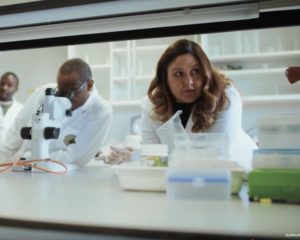 In this video, Laura Boykin from the University of Western Australia describes how Cray supercomputers are helping to fight world hunger.
In this video, Laura Boykin from the University of Western Australia describes how Cray supercomputers are helping to fight world hunger.
The cassava plant helps feed 800 million people worldwide. In East Africa, this critical food source is under siege from viruses spread by whiteflies. Computational biologist Laura Boykin talks about the threat to lives and livelihoods the pest represents, the international effort to fight it, and how supercomputing flips the script on a once unwinnable war. Cray supports visionaries like Laura and her scientific colleagues in East Africa in combining computation and creativity to change outcomes.
Transcript:
“A lot of people don’t even know about cassava. But for people in East Africa, it’s a staple food. Cassava feeds 800 million people.
About four years ago, I went to Kenya for a meeting with a whole bunch of scientists. And I met Tony Bakilana. And he said, “Something is killing the cassava in Congo.” It’s dying because of viruses that are being transmitted by a tiny insect called the whitefly.
All the whiteflies globally look identical. So the only way you can tell them apart is to look at their genetics. Time is ticking. 800 million people need a [inaudible], right. And the only way you can do what you got to do is to use a supercomputer.
The farmers, 80% of them are women. They’re working harder than anybody on this planet to feed their family. We went to Tanzania. And we met with a farmer named Asha. She had sick-looking plants.
We’re using supercomputing, portable DNA sequencers. We’re using everything we can to save this plant so that people don’t have to go without food. Cassava is a poverty fighter. If a family has enough cassava, they can feed their families. They can sell it at the market for really important things like school fees, medical expenses, and savings.
We have the tools and the technology to solve food security. So people should not go without food, period. This idea that there is brain drain out of Africa, I think there can be some brain drain in. The end goal is to open high-tech labs in East Africa that have high-performance computing with genomic capabilities completely run by East African scientists. We want farmers to have more food. And we want scientists on the African continent to have an equal voice.
I’m really trying to make myself obsolete. My name is Laura Boykin. I’m a scientist. I’m a computational biologist. And I’m using technology to help farmers in East Africa.”
See more stories like this at cray.com/creativity.




